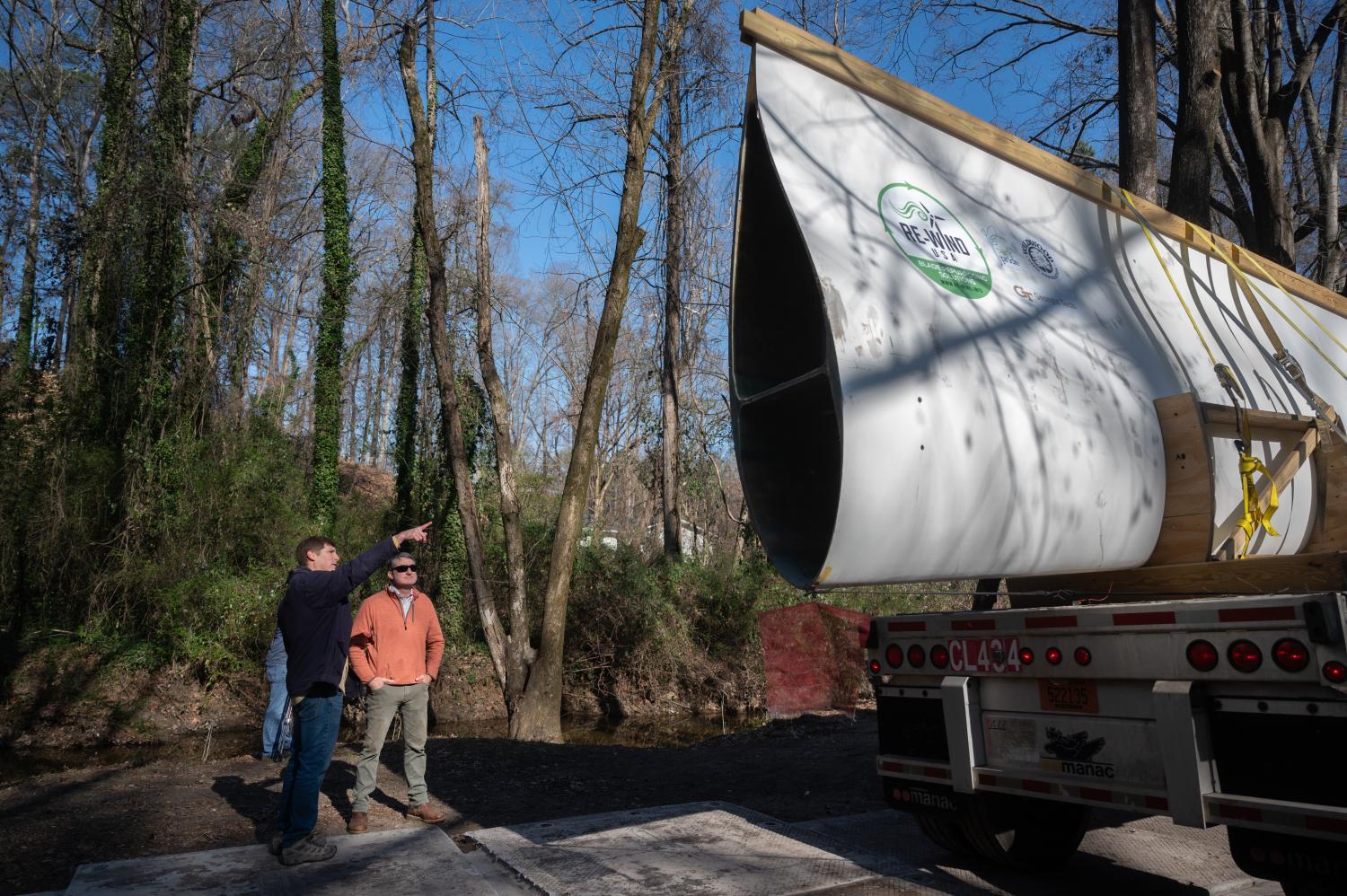
Photo by Allison Carter
Jud Ready first visited Beaverbrook Park for an adopt-a-stream event as a graduate student. When he moved to the northwest Atlanta neighborhood, he got involved with improvement efforts at the park.
“It was a muddy mess back then. Over time, we added an exercise trail, playgrounds, a gazebo, and ball fields, but we didn't have a place where you could just walk through the woods,” Ready said. The problem? A creek prevented easy passage, and the park lacked a bridge to cross it.
Despite receiving a grant from Park Pride, a nonprofit that helps residents improve their parks, Ready realized it wasn’t nearly enough money to build a bridge over the rushing waters. Then Ready, a principal research engineer at the Georgia Tech Research Institute with a joint appointment in the School of Materials Science and Engineering, learned that one of his colleagues was using decommissioned wind turbine blades for bridges.
For eight years, Russell Gentry, a professor in the School of Architecture and a member of the Re-Wind Network, has explored how to upcycle wind turbine blades into functional infrastructure. Re-Wind, an international organization, has constructed two bridges in Ireland, where wind energy is more prevalent. The Beaverbrook bridge is the first in the U.S., but building it hasn’t been a simple copy-and-paste process from across the Atlantic Ocean.
Read the full article on Georgia Tech's Research website.